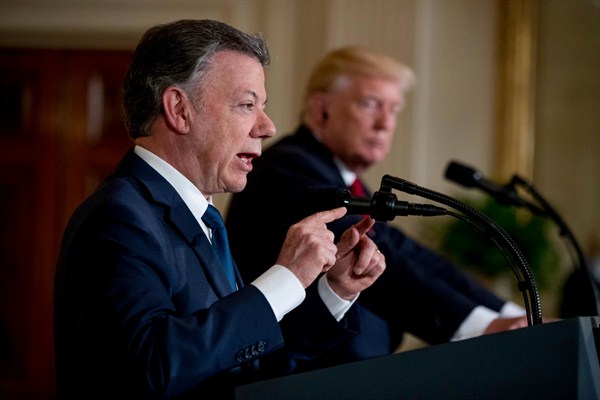Colombia right now is closer than it has ever been to solving its illicit drug problem. This may be a surprising contention, since the country just measured record-breaking cultivation of coca, the plant used to make cocaine.
Yet the landmark peace deal between the Colombian government and the country’s principal guerrilla group, the Revolutionary Armed Forces of Colombia, or FARC, has eliminated the most prominent obstacle to consolidate democratic governance over the vast rural areas where coca is cultivated. Or, at least it has eliminated the handiest excuse for longstanding inaction. Passed in November, the peace accord, along with President Juan Manuel Santos’ declared commitment to new counternarcotics approaches, offers at least the outlines of a kind of Marshall Plan for Colombia’s countryside, which has suffered from generations of neglect.
The Santos administration has declared its intention to eradicate 100,000 hectares of coca this year, or nearly 250,000 acres. Half of that will be through forcibly eradicating large-scale coca plots or plots in areas where no farming should be occurring, like national parks. The other half will be through a series of pacts that make up the peace deal’s fourth chapter, in which coca-growing families voluntarily eradicate the crop in exchange for assistance moving to legal products.

